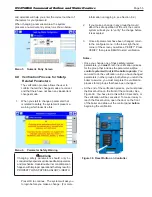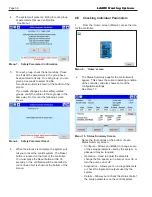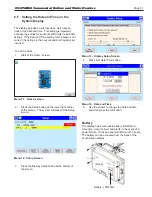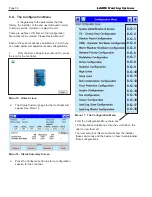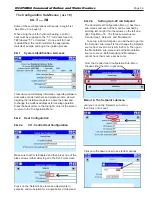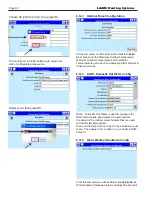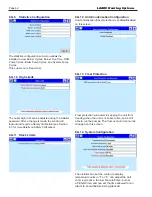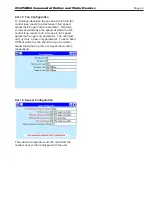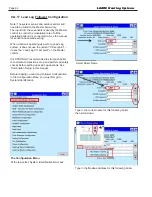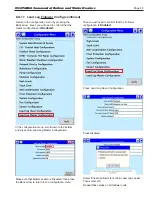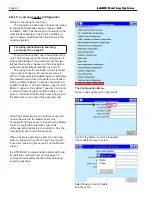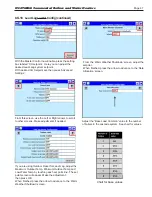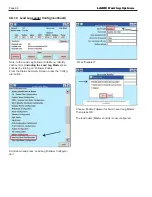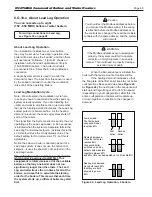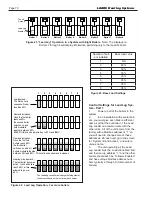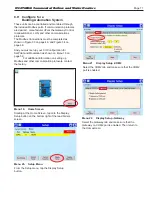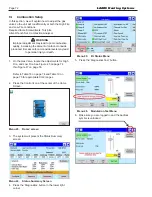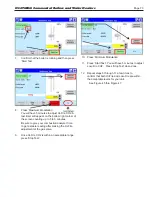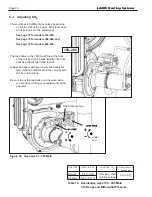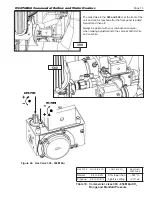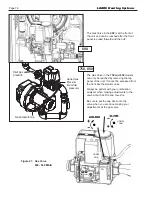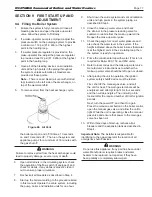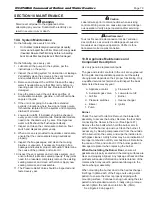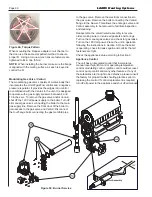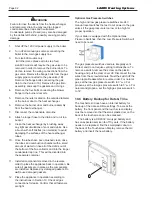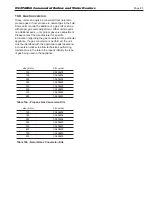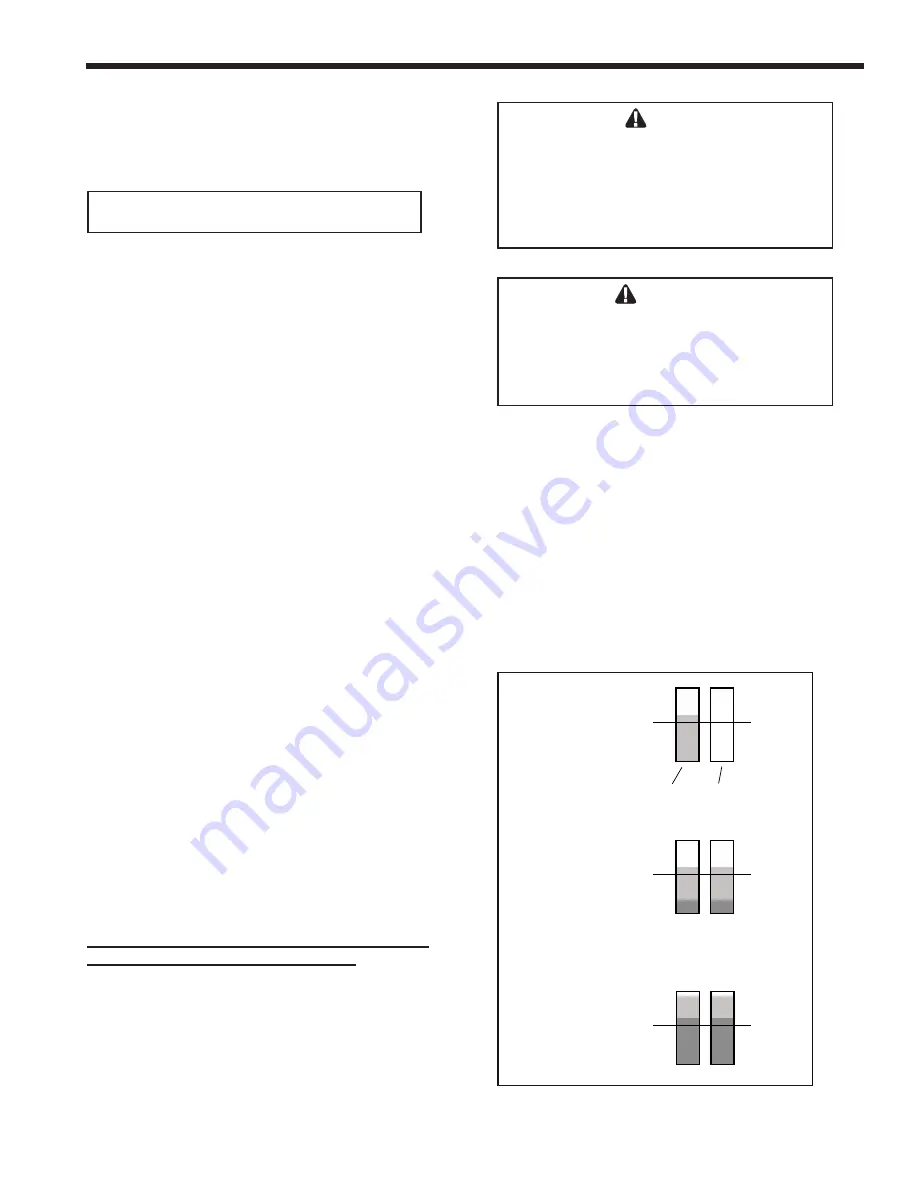
Page 69
Figure 40.
Lead Lag Operation, 2 boilers.
Low demand -
The first boiler in
sequence fires at
less than 65%
First
boiler
Second
boiler
Demand increases -
Once the first boiler
reaches 65%,
the second boiler
switches on, and by
default, both modulate
together between 20%
and 65% (this can be adjusted up to 20% and
85
%).
Nearing max. demand -
Once both reach 65%,
then they are both
allowed to go over
65%
8.G.18.a
About Lead Lag Operation
You can cascade up to eight
(150 - 850 MBH) boilers or water heaters.
For wiring connections to Lead Lag,
see Figure 34 on page 48
About Lead Lag Operation -
If an installation includes two or more boilers,
they may be set up for “Lead Lag” operation. One
boiler will be set up as the “Leader”, and the others
will operate as “Followers.” Figure 41 shows an
installation with the Lead Lag Maximum of eight
(150-850 MBH) boilers. The boiler controllers
are connected in a “daisy chain” using a Modbus
connection.
A single System sensor is used to monitor the
demand for heat. The input from this sensor is used
by the Leader controller to control the modulation
rates of all of the operating boilers.
Lead Lag Modulation Cycle -
Note - We will explain the modulation cycle here,
in case you need to understand how the Lead Lag
system actually operates. If you are installing the
unit(s) and want to skip this section, just remember
that, as the heating demand increases, the Lead Lag
system puts more boilers on-line. As the heating
demand is reduced, the Lead Lag system shuts off
some of the boilers.
The signal from the System sensor is sent to the unit
operating as the Lead Lag Leader. A Run sequence
is initiated when the system temperature falls to the
Lead Lag Central Heat setpoint. (Actually this is the
LL CH setpoint less the On Hysteresis value. The
default setting for On Hysteresis is 5°F, but this is
adjustable.)
Notice that, when a boiler is operating as part of a
Lead Lag system, it does not use the normal CH
setpoint – it uses the special LL CH setpoint on the
Lead Lag Leader.
The unit acting as the Lead Lag Leader decides
which boiler is assigned to start first.
This
assignment is rotated across all of the available
boilers so that any one boiler does not run
significantly longer than the others. The Lead
Lag controller tracks the run times for all of the
boilers, and uses this to calculate the starting
order for the boilers. This means that each time
the system starts up, a different boiler may start
first.
Caution
You should set the Modbus addresses before
you connect the Modbus wiring. If the wiring
is attached before the Modbus addresses on
the controls are changed, there will be multiple
controls with the same address, and the system
will not work.
WARNING
If the Modbus addresses are not assigned
properly, the system could fail to operate
correctly, or it might operate in an unsafe
manner. This could lead to property damage,
personal injury or death.
•
When the Run sequence is initiated, the
boiler with the least amount of runtime will fire.
•
If the heating demand increases so that
the firing rate of that first boiler rises to your boiler
configurations Base Load Value
(see Figure 40
or Figure 42)
, the next boiler in the sequence will
start up and begin firing at 20 to 35% fan speed
(depending on your configuration). After this, the
entire configuration of boilers will modulate up
or down together, in reaction to the changes in
demand.
N
EO
T
HERM
Commercial Boilers and Water Heaters
Summary of Contents for Neotherm NTH
Page 4: ...LAARS Heating Systems...
Page 36: ...Page 36 Figure 22 Hydronic Piping Single Boiler Zoning with Circulators LAARS Heating Systems...
Page 52: ...Page 52 Figure 36 Ladder Diagram 7 H Ladder Diagram LAARS Heating Systems...
Page 100: ...Page 100 Parts Illustration 4 Internal Components Sizes 750 850 LAARS Heating Systems...
Page 102: ...Page 102 Parts Illustration 6 Gas Train Components Sizes 600 850 LAARS Heating Systems...

